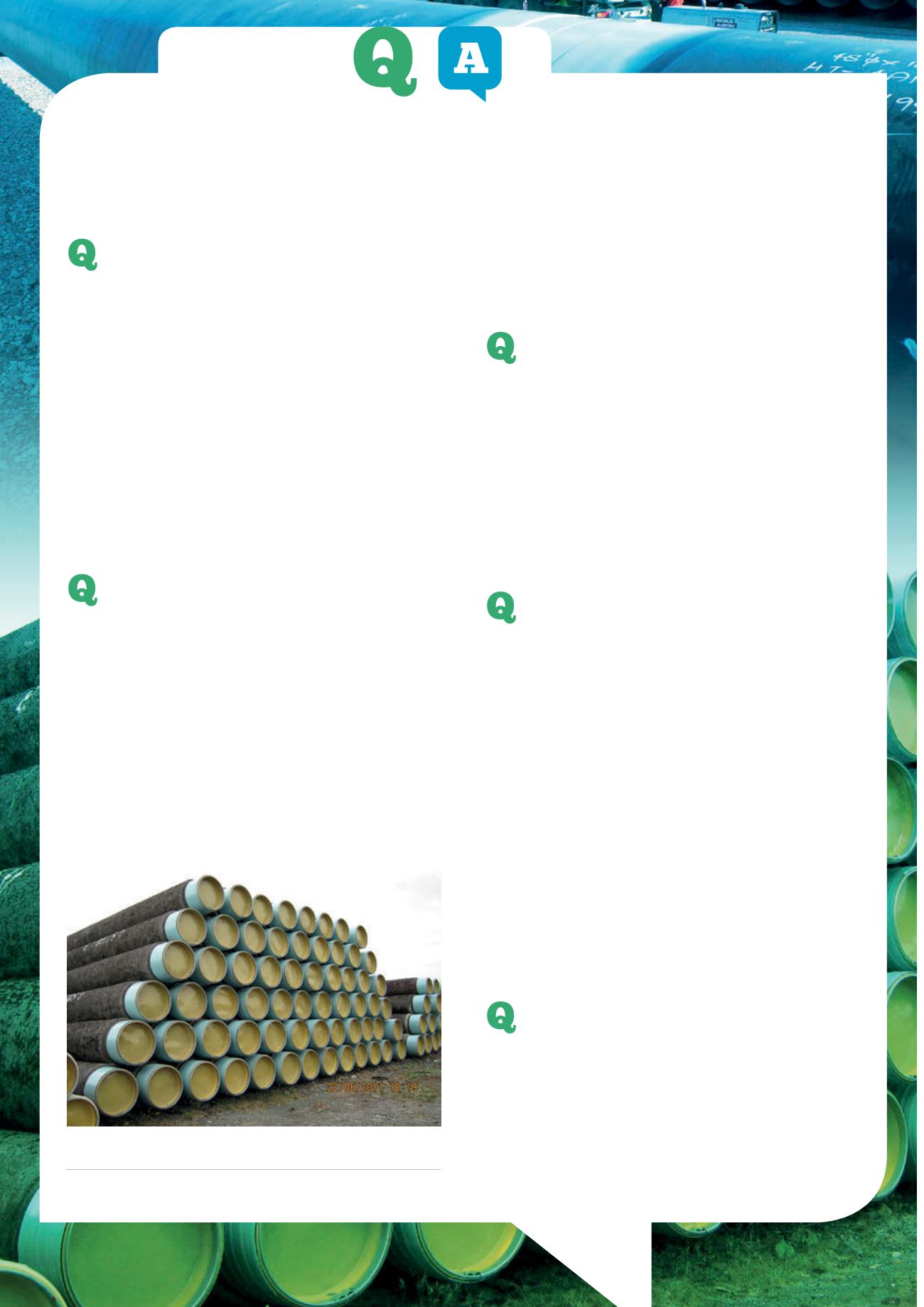
Coatings
&
Frits Doddema, Seal For Life
Industries, the Netherlands
The biggest threat to the external integrity
of pipeline coatings (in the plant and/or in
the field)
It is ageing pipelines and the state of coatings and back-up
by cathodic protection (CP) that pose the biggest threat to
pipelines’ external integrity. Stress corrosion cracking (SCC)
induced by alternating current (AC) or direct current (DC),
and stray current inflicted corrosion issues are also a concern.
When is it time to rehabilitate? Specific electrical resistance
in Ohm/m
2
is a good indicator. The coating industry should
avoid misleading terms like ‘non shielding’. The purpose of the
old and rehab underground pipeline coating is to provide a
barrier, a shield and to avoid the creation of micro-cracks in
the coating. The specific electric insulation properties of the
coating should be enough not to allow a CP current to pass
through the coating. It means the coating should have low
moisture absorption and a high electrical resistance.
R&D spend on coatings for oil/gas
pipelines
Pipelines are being developed worldwide to meet rising
demands for energy, and pipeline integrity is being studied
to reduce loss in transmission and to handle increasingly
hostile environments. From cement composites to fusion
bonded epoxies (FBE), self-healing polymers and layered
polyolefin, new coating materials have been produced and
are undergoing extensive trials in the laboratory and infield
testing for internal pipe coating usage and external for field
application.
Pipe coating companies are undertaking much of the
new research. Some pipe coaters are looking at alternative
adhesion promoters for polymeric coatings in wet sour gas
conditions. Pipelines in rough terrain, like blasted out rock
trenches, require additional mechanical protection. New
rockshield or thin layers of fibre-reinforced cement solutions
have been developed. Also, excellent work is being done on
cementitious-based linear anode solutions.
Coatings for high pressure, high
temperature pipelines
From the perspective of polyolefin-based coating solutions
for high temperature pipelines, we have seen a shift to
polypropylene. Re-introduced solutions like irradiation
beamed mechanical protection materials based on polyolefin
has caught attention. For field application and in the shop,
pipe can be coated with these cold applied or heat shrinkable
sheets in order to protect the anticorrosion coated pipelines.
The irradiation beamed materials and adhesives withstand
the 120˚C conditions. These materials offer a longlife 3D
crosslinked advantage over extruded polylefins for thermal
stressfull application and services.
Coatings for offshore pipelines
Corrosion control for offshore pipelines is typically
achieved with a combination of pipe coatings supported with
CP to cover coating holidays or defects. The best and most
practical measures that can be taken to prevent damage to
the corrosion control systems depend on the type of pipeline
and the pipelay method. The following general guidelines may
prove useful:
)
Weight-coated pipelines.
)
Reel laid pipelines.
)
Conventional pipelay (S-Lay).
)
Conventional pipelay (S-Lay)
<
200 ft seawater.
)
J-Lay pipelines: bottom or controlled depth towed
pipeline installation.
In case of coating repair or damage repair, the company
offers subsea applicable systems to prevent corrosion,
insulation and sealing.
Combining technologies for corrosion
protection
Seal For Life Industries encapsulates five established
and leading brands in the area of dealing with corrosion
prevention and control. We operate worldwide across many
different industries and in many different markets – which is
in no small measure thanks to the innovative capabilities of
the five brands within our group, each of which has its own
specific disciplines.
Figure 1.
Statoil pipeline storage by Dhatec EndCaps, Stopaq
Sealing and Corect VPCI provided by Presserv AS.
46


